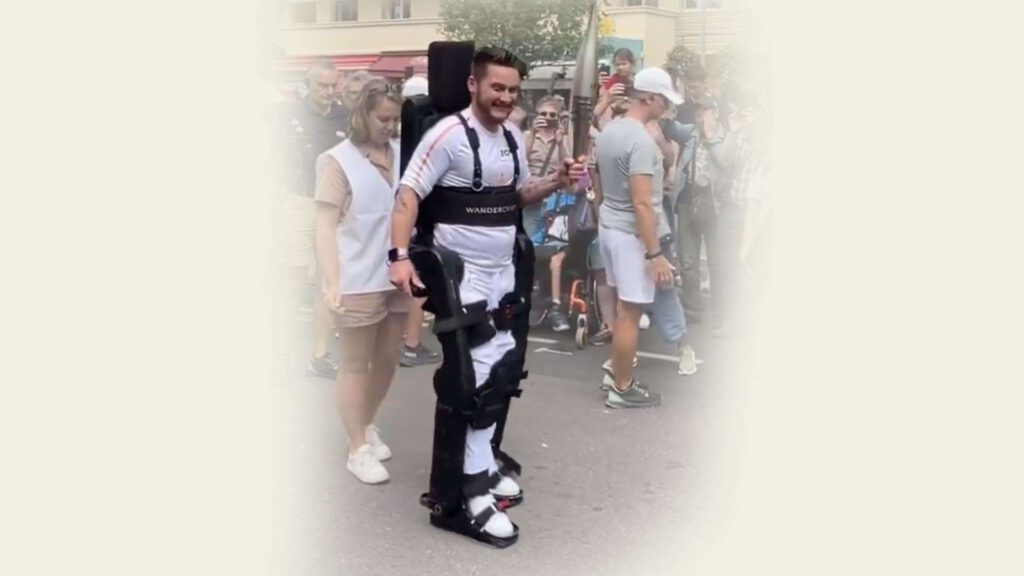If Kevin Piette ever had dreams of competing in the Olympics, those dreams likely ended more than a decade ago when the young tennis player was left paralyzed in a motorcycle accident.
But this week, Piette carried the Olympic torch through the streets of Paris, thanks to a truly impressive robotic exoskeleton.
The video tells pretty much the whole story, so enjoy!
Kevin Piette, who has been paralyzed since an accident, made history today by carrying the Olympic torch in an exoskeleton!
— Kevin W. (@Brink_Thinker) July 23, 2024
The 36-year-old Piette is one of the first test “pilots” of the exoskeleton, which is currently being used for rehabilitation but may soon be available for personal use, according to the official Olympic website. Piette has taken part in “Cybathlon,” a competition in which “people with disabilities use assistive technology to carry out everyday activities.”
Wondercraft, the France-based company that developed the “Atalante-X” exosuit Piette is wearing, says its design is “the first and only self-stabilizing exoskeleton on the market for personal, everyday use to enable people with disabilities to walk hands-free in their community.” Since receiving approval from European Union health authorities in 2019, Wondercraft says its device has been used to help more than 650 patients in more than 5,000 sessions.
The company received approval from the U.S. Food and Drug Administration (FDA) in 2022 for its exoskeleton suit for stroke rehabilitation and opened new headquarters in New York City.
The company was co-founded by Jean-Louis Constanza, whose son suffered from a neurological disorder that gradually lost his ability to walk.
“When my son was 5 years old, I gave him his first wheelchair and told him I was a robotics engineer, and he said we should build a robot that could walk,” Constanza told an e-magazine covering medical innovation in 2022.
If that doesn’t strike you, take a look at how Constanza describes the reactions of users who put on the device for the first time: “The moment they stand up with nothing to stop them from falling over makes them laugh or cry. It’s always a shock, followed by an exhilarating act of walking. Standing in our exoskeleton is not like standing vertically in a frame, nor like standing on crutches, it’s like coming back to yourself.”
The Olympics are meant to reward excellence in athletics. Piette’s participation in the torch relay certainly fits that bill. But let’s also applaud the incredible human ingenuity behind the Wondercraft robotic suit, including Constanza and his team of engineers. They’ve taken an idea that seems like science fiction and made it a reality. We can’t wait to see people roaming the streets of American cities in these exoskeletons. FDA, don’t screw this up!

